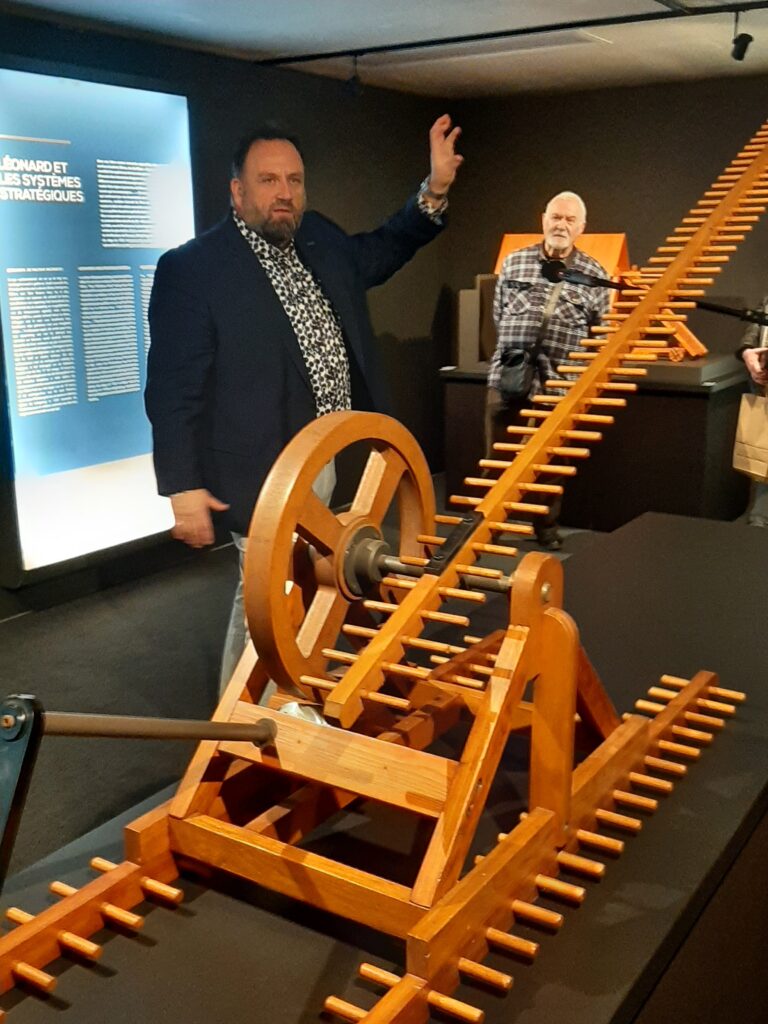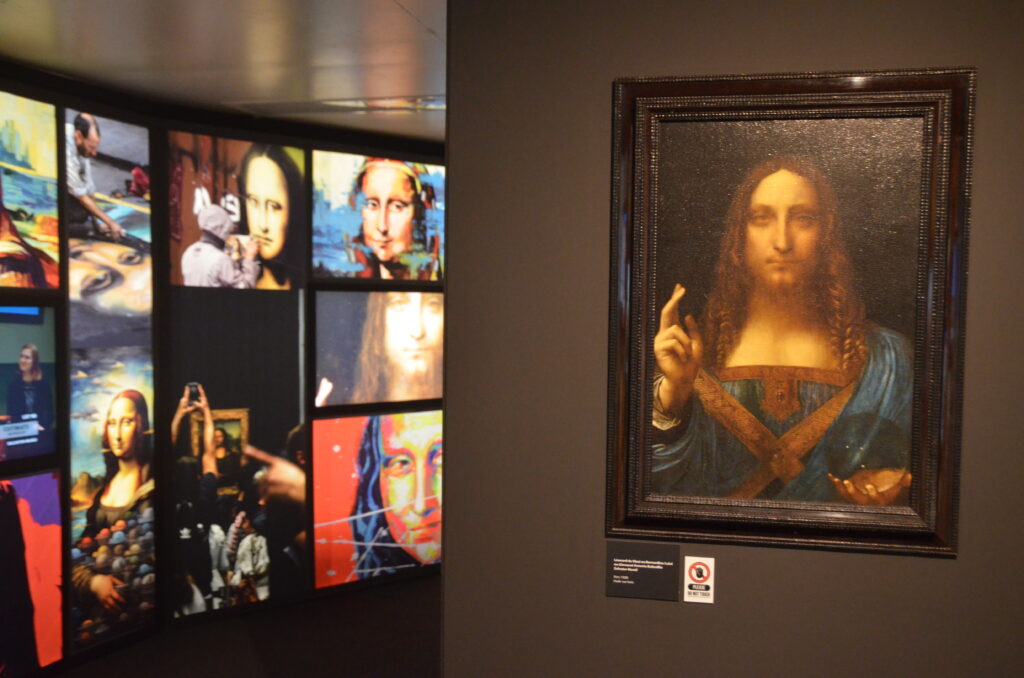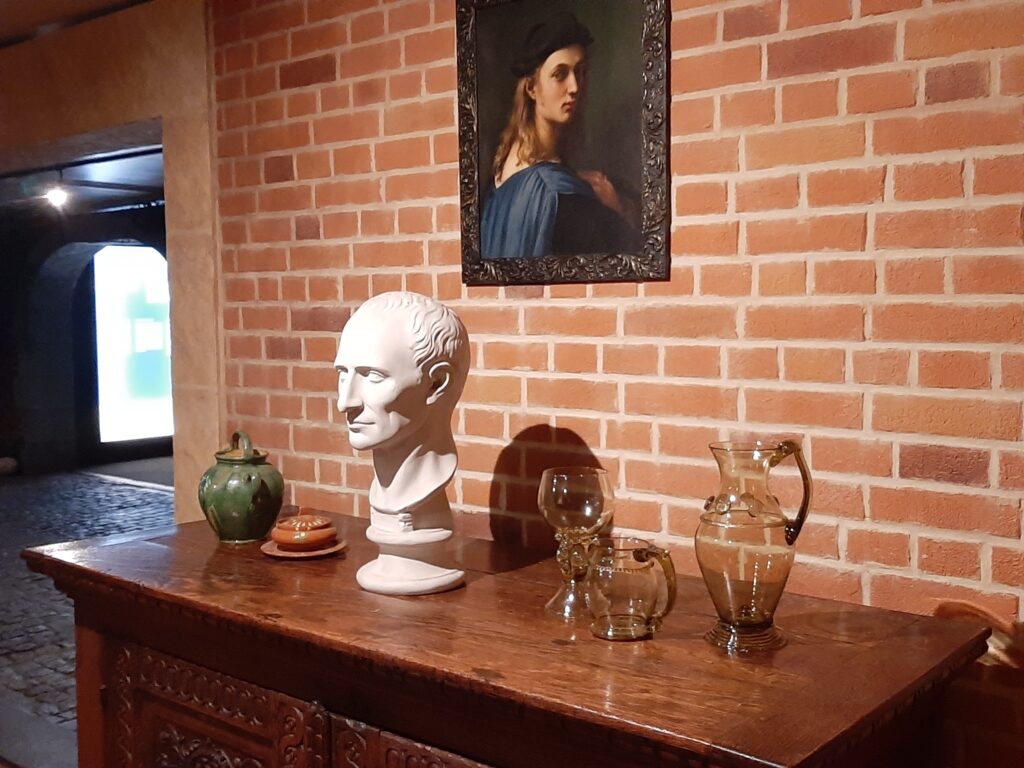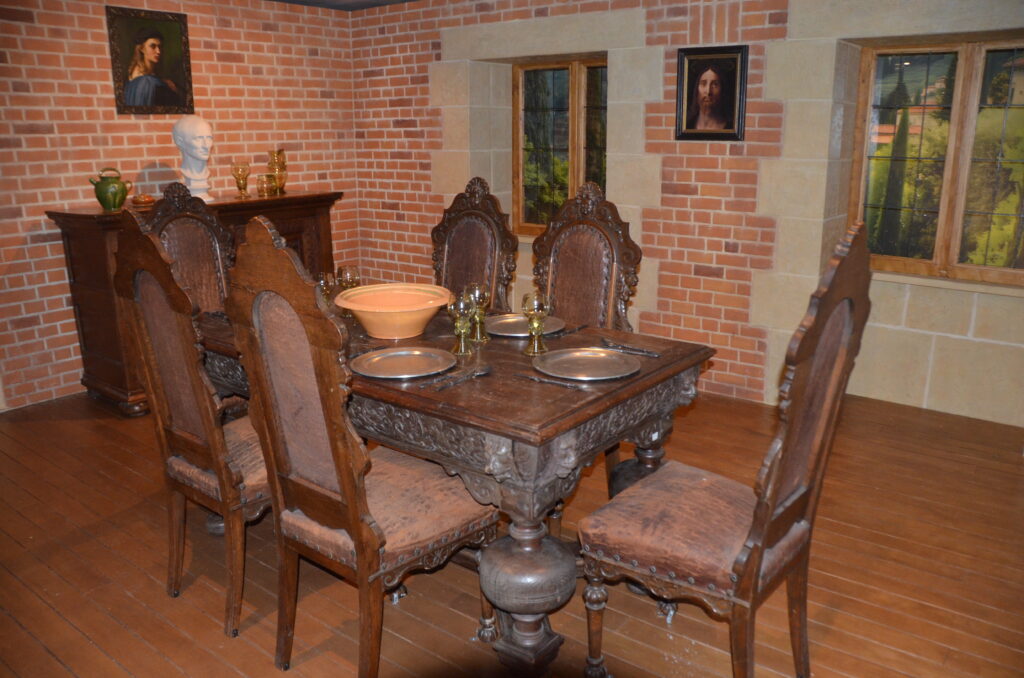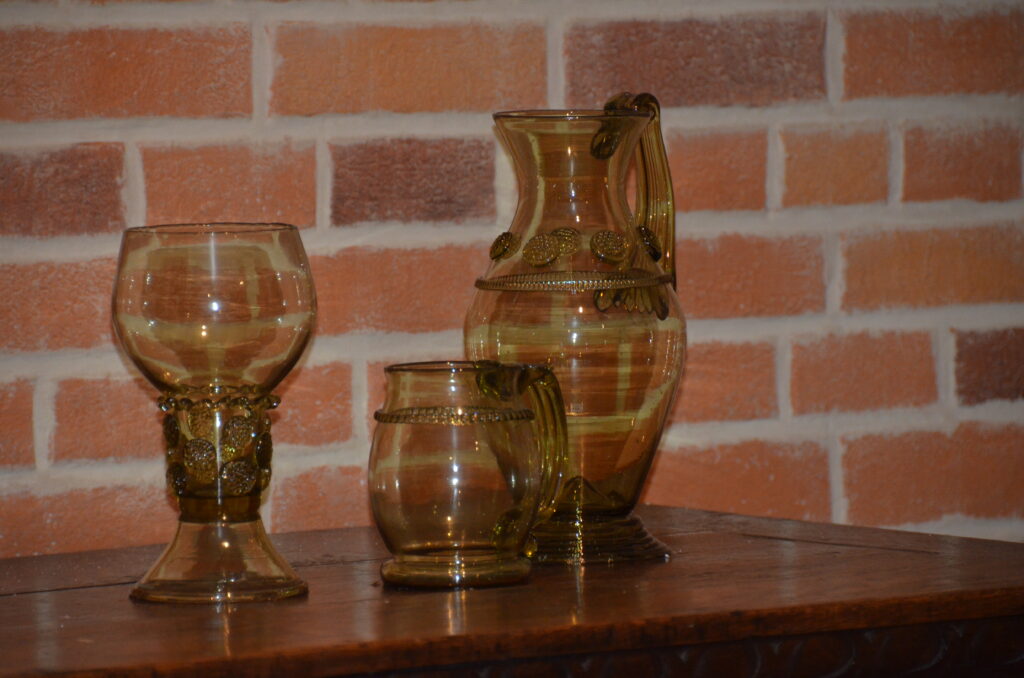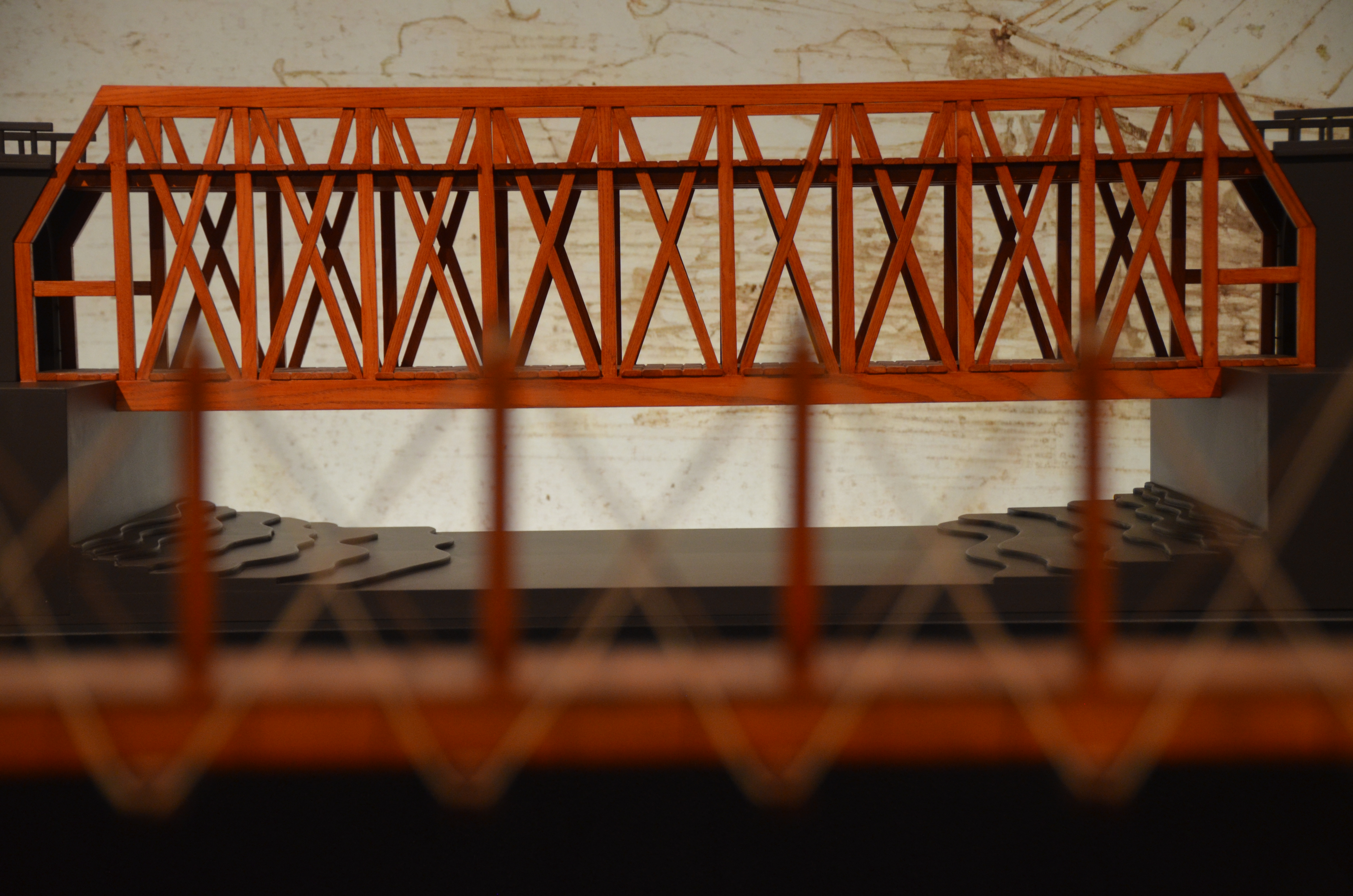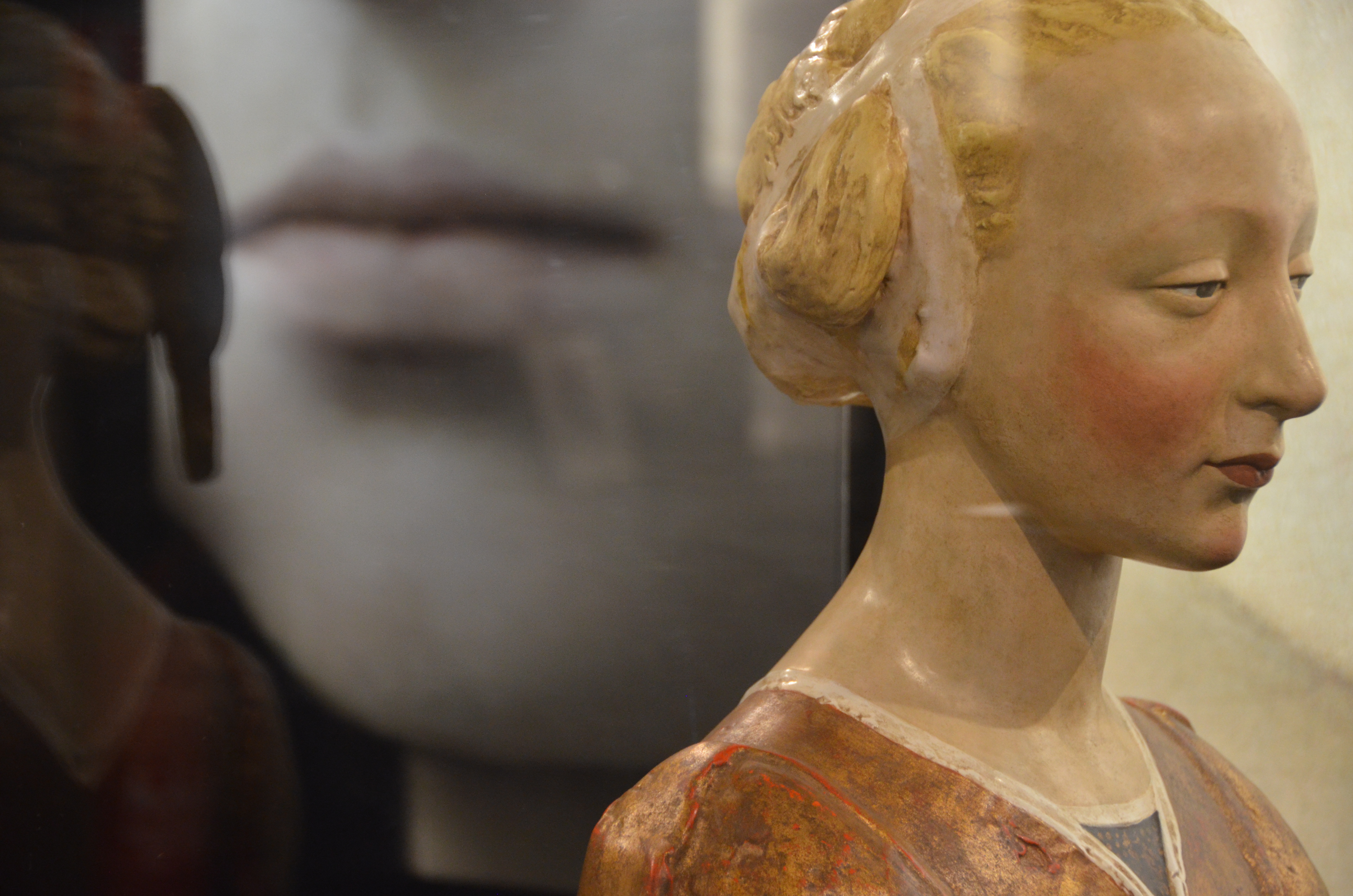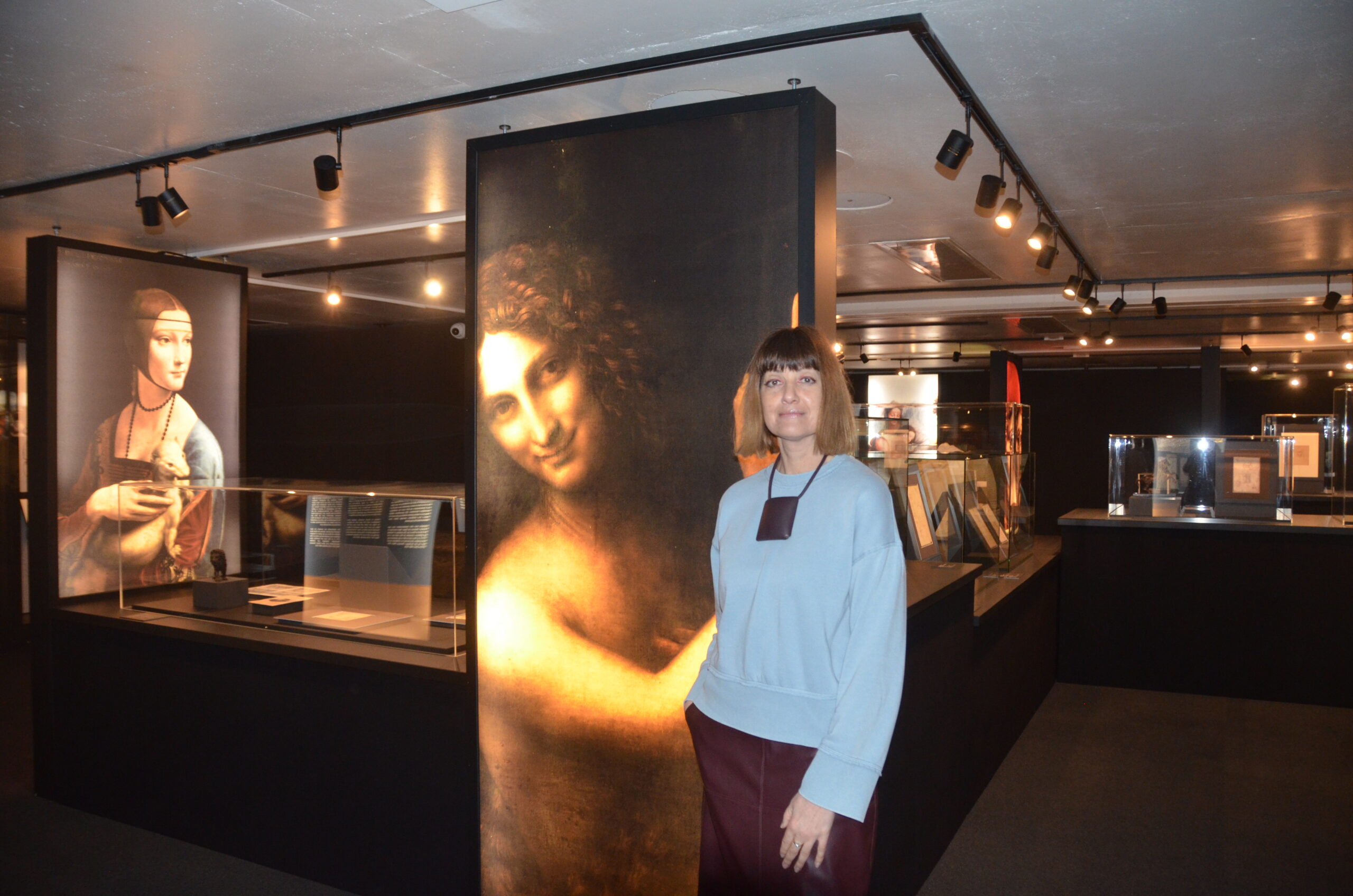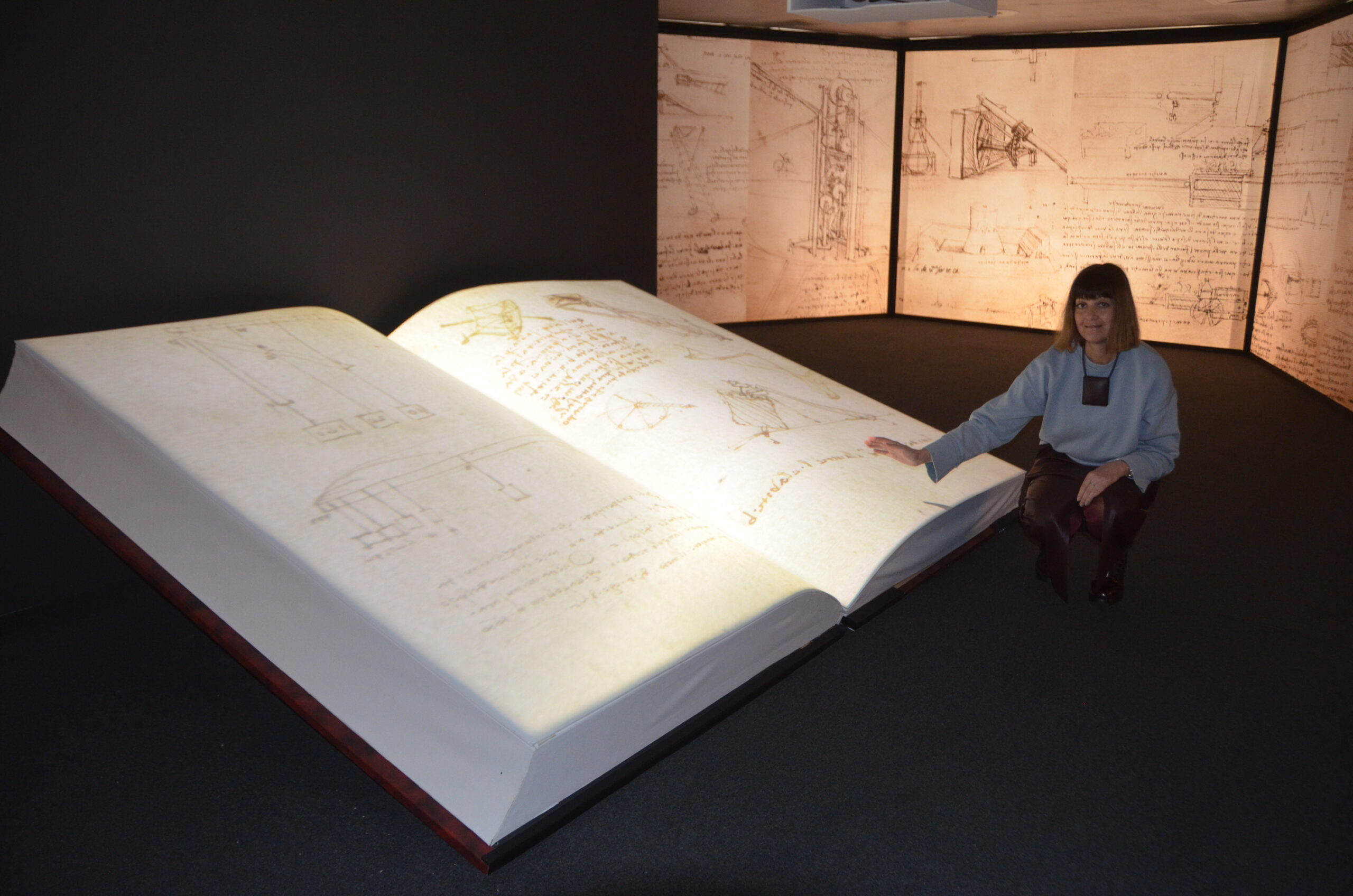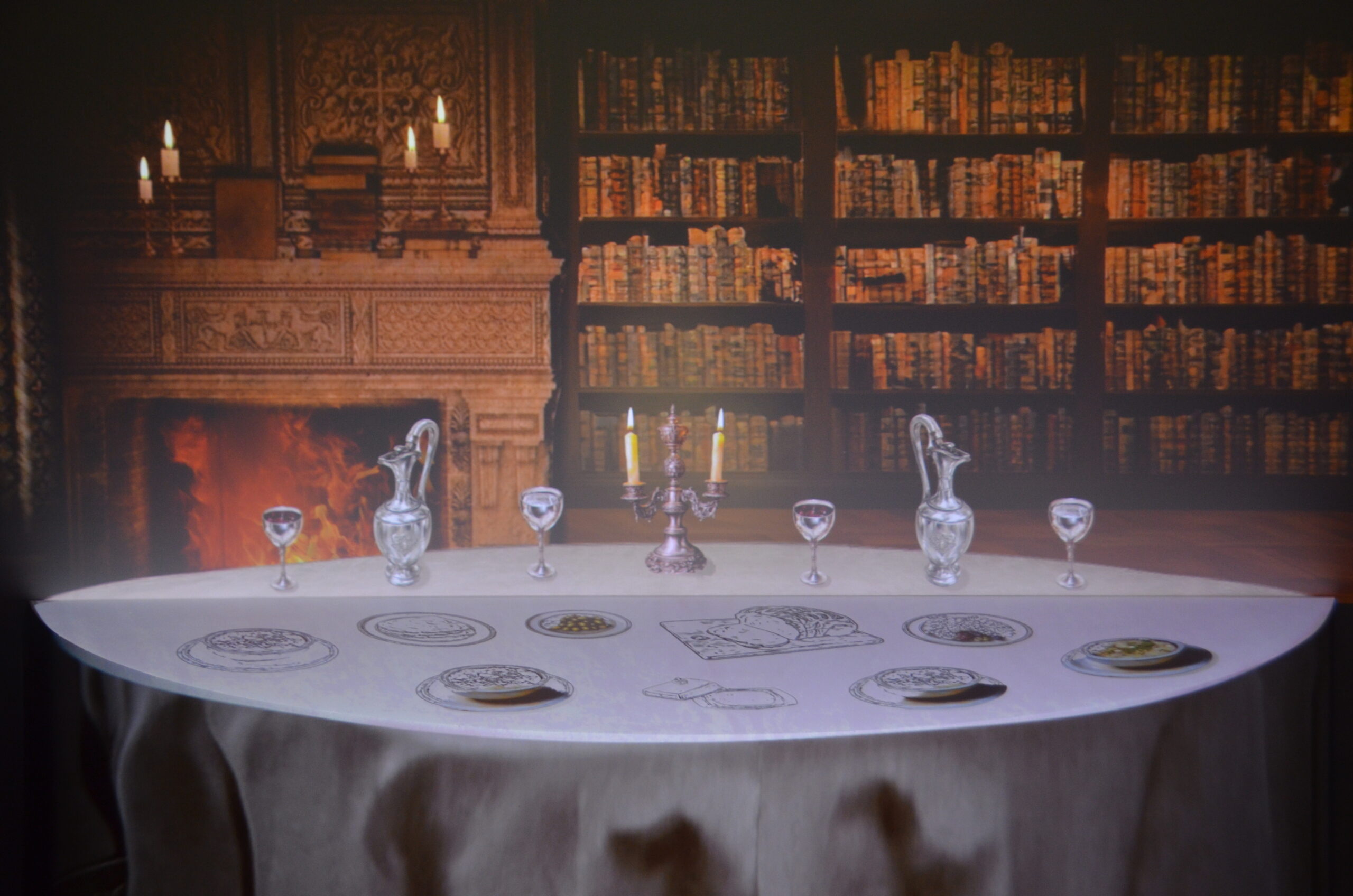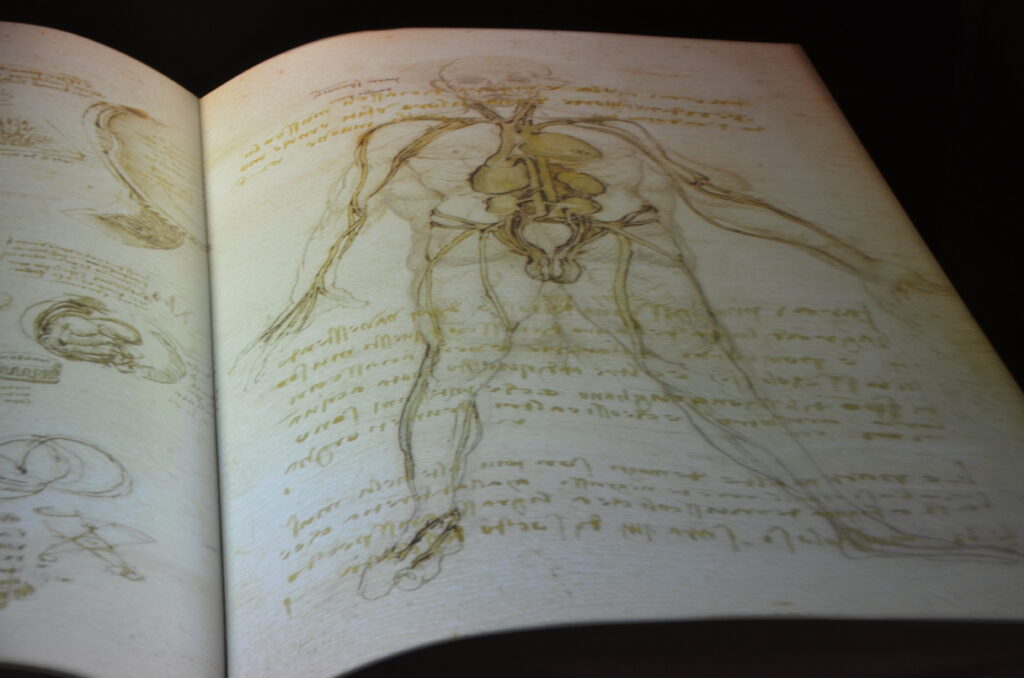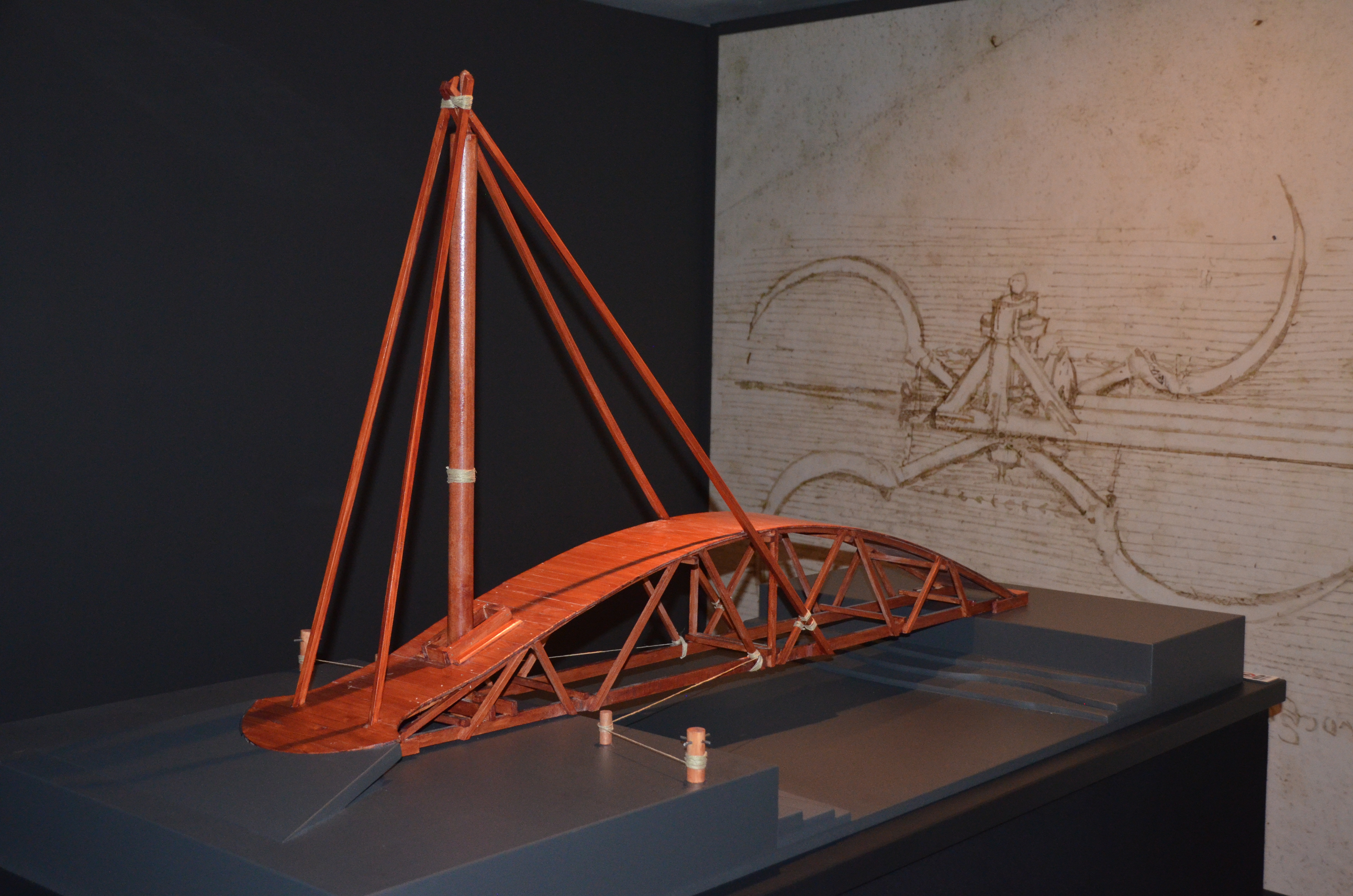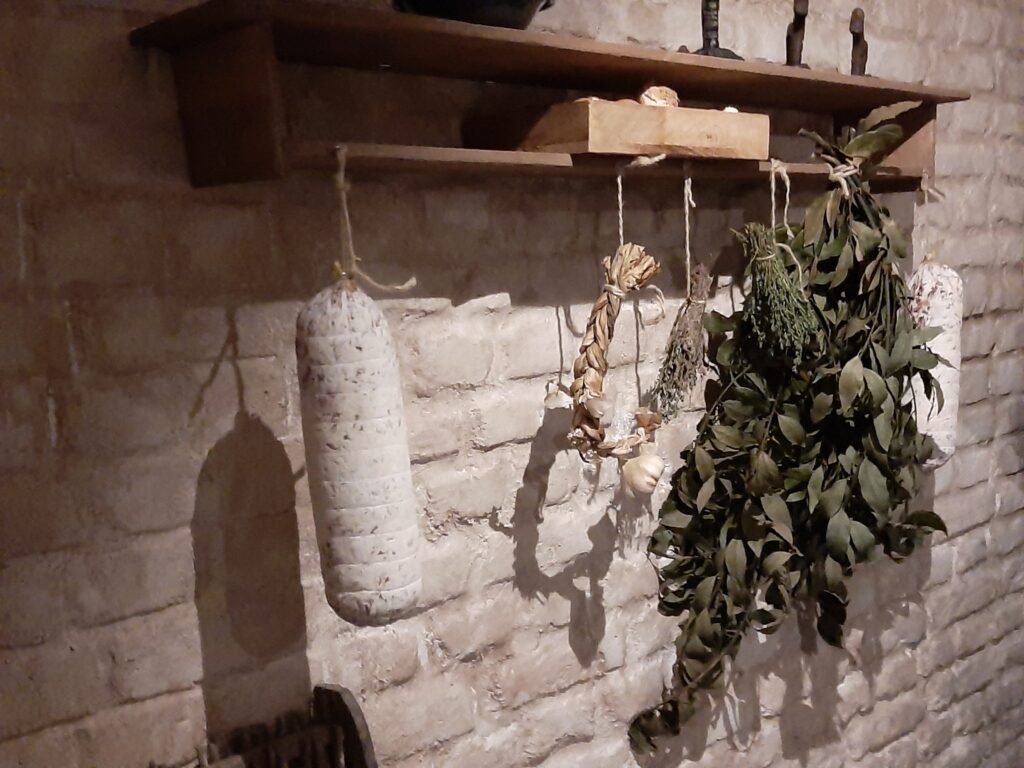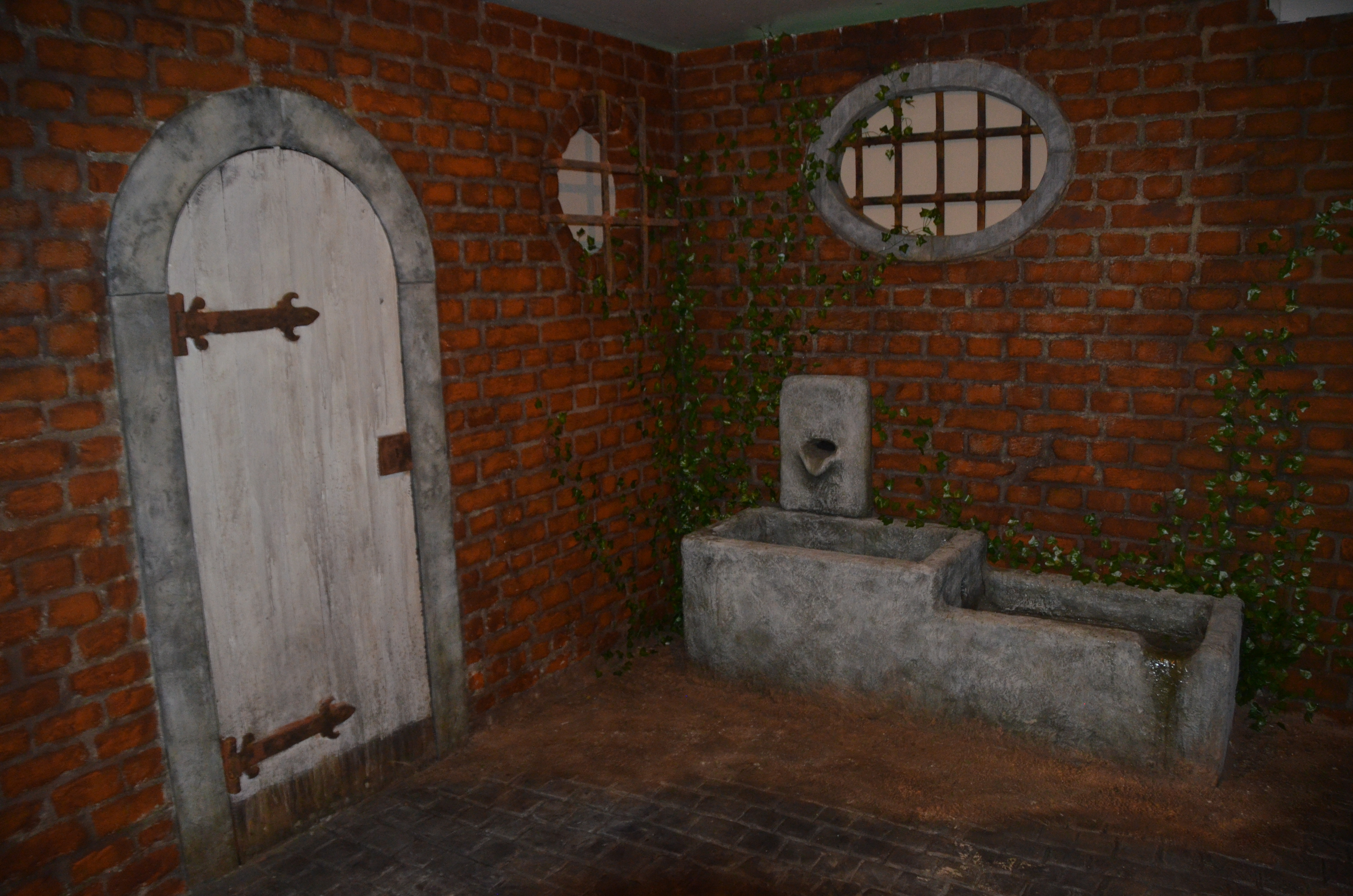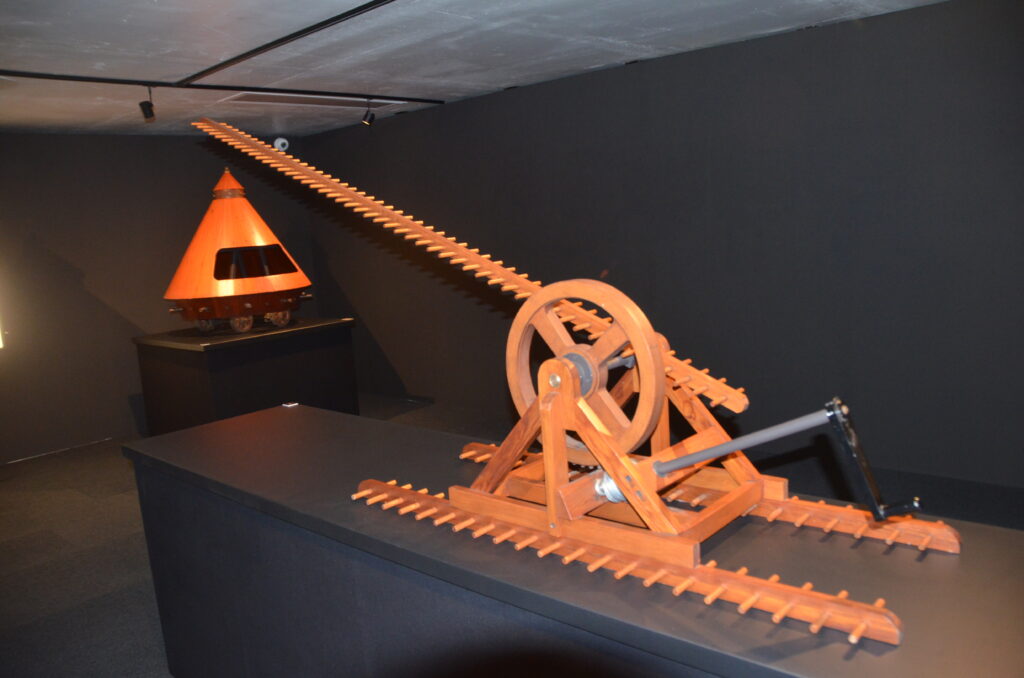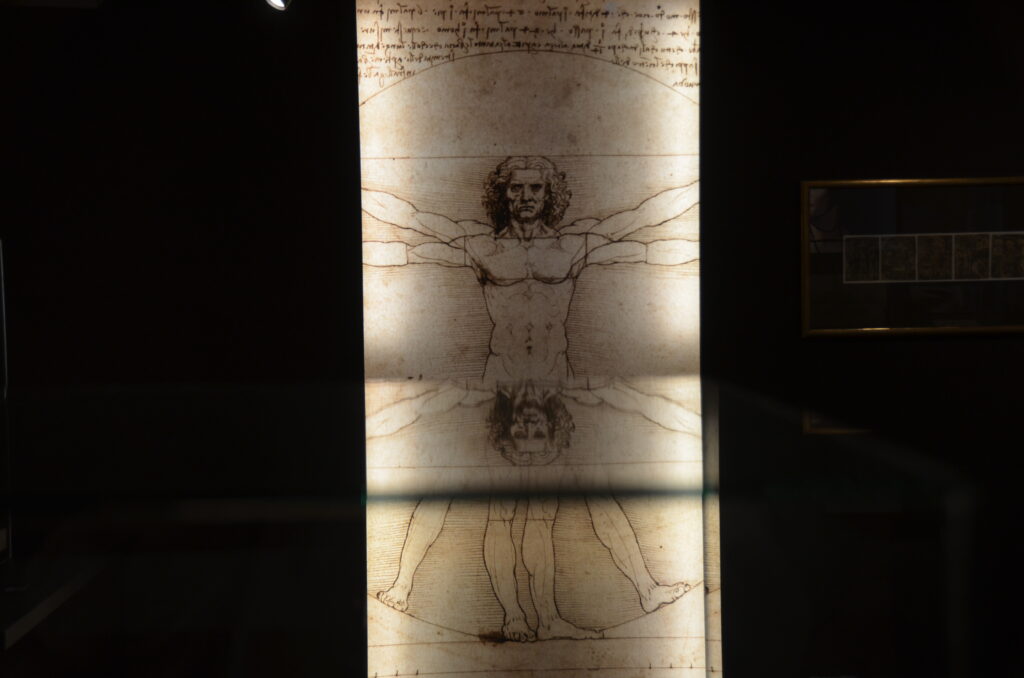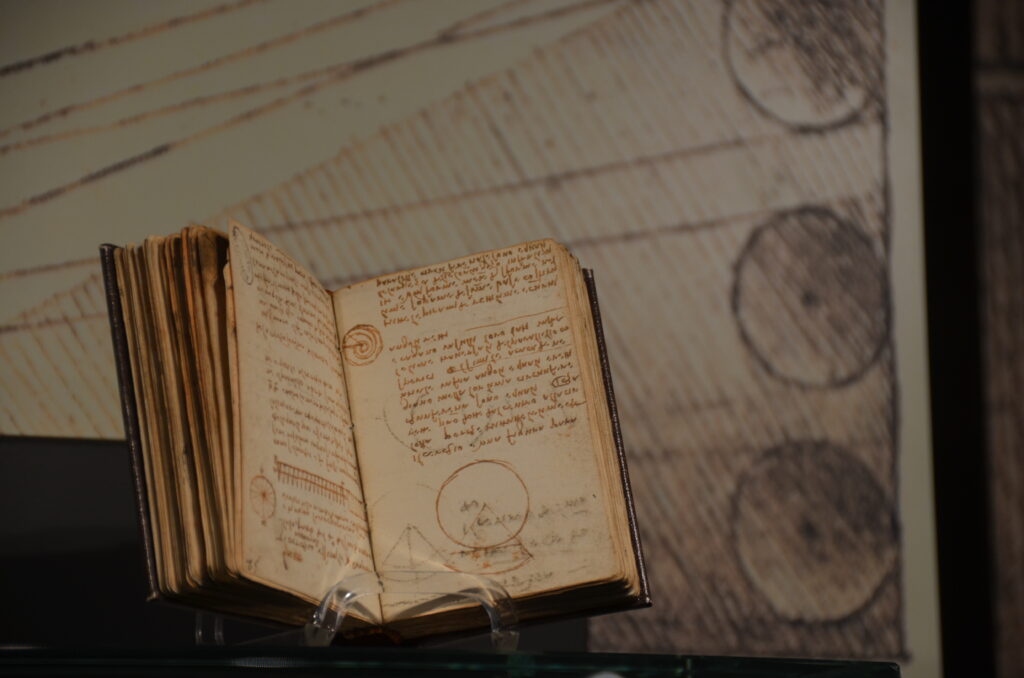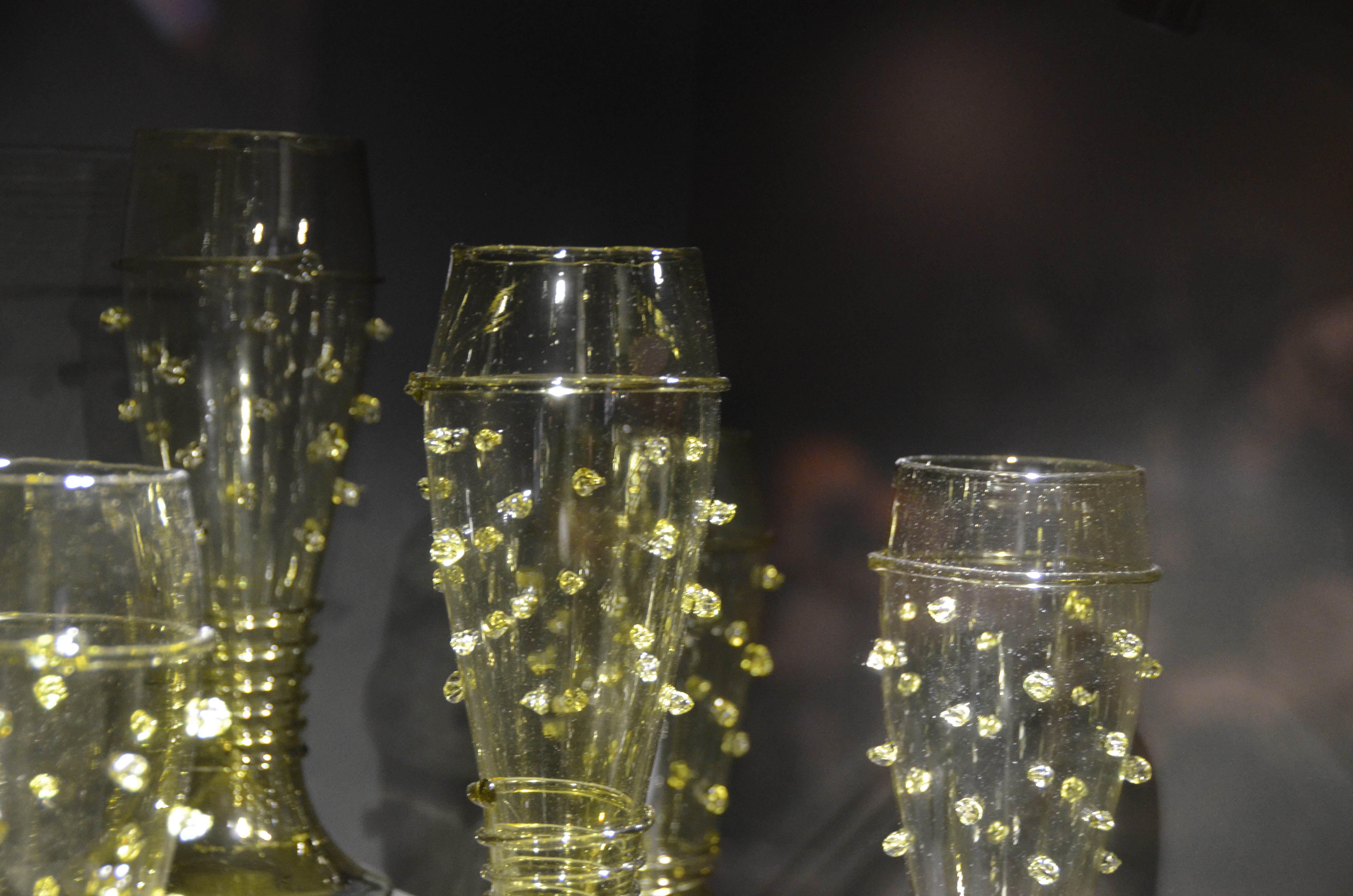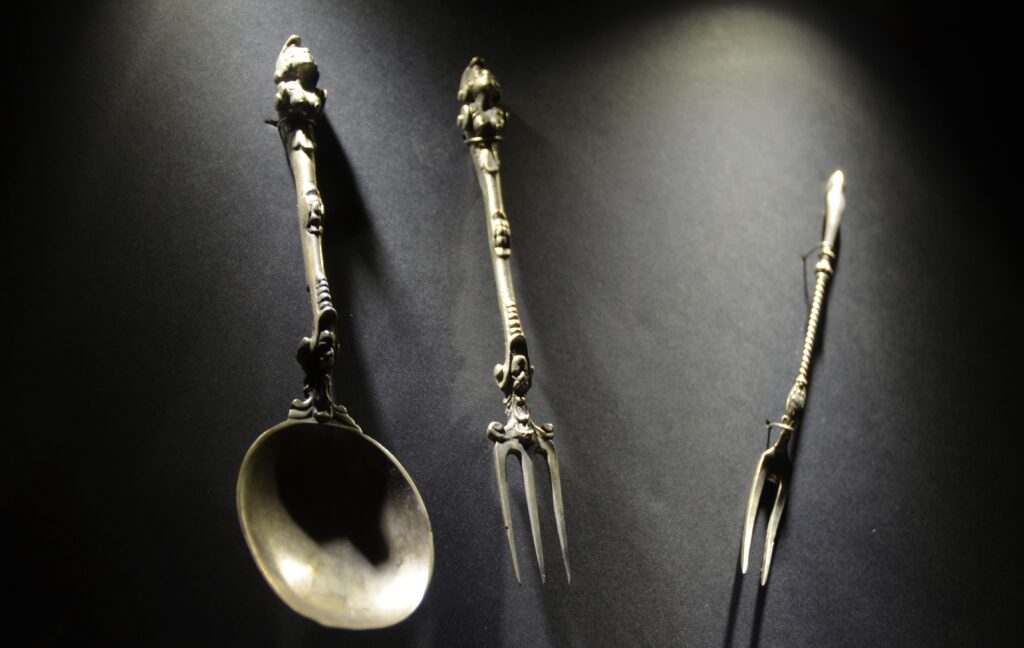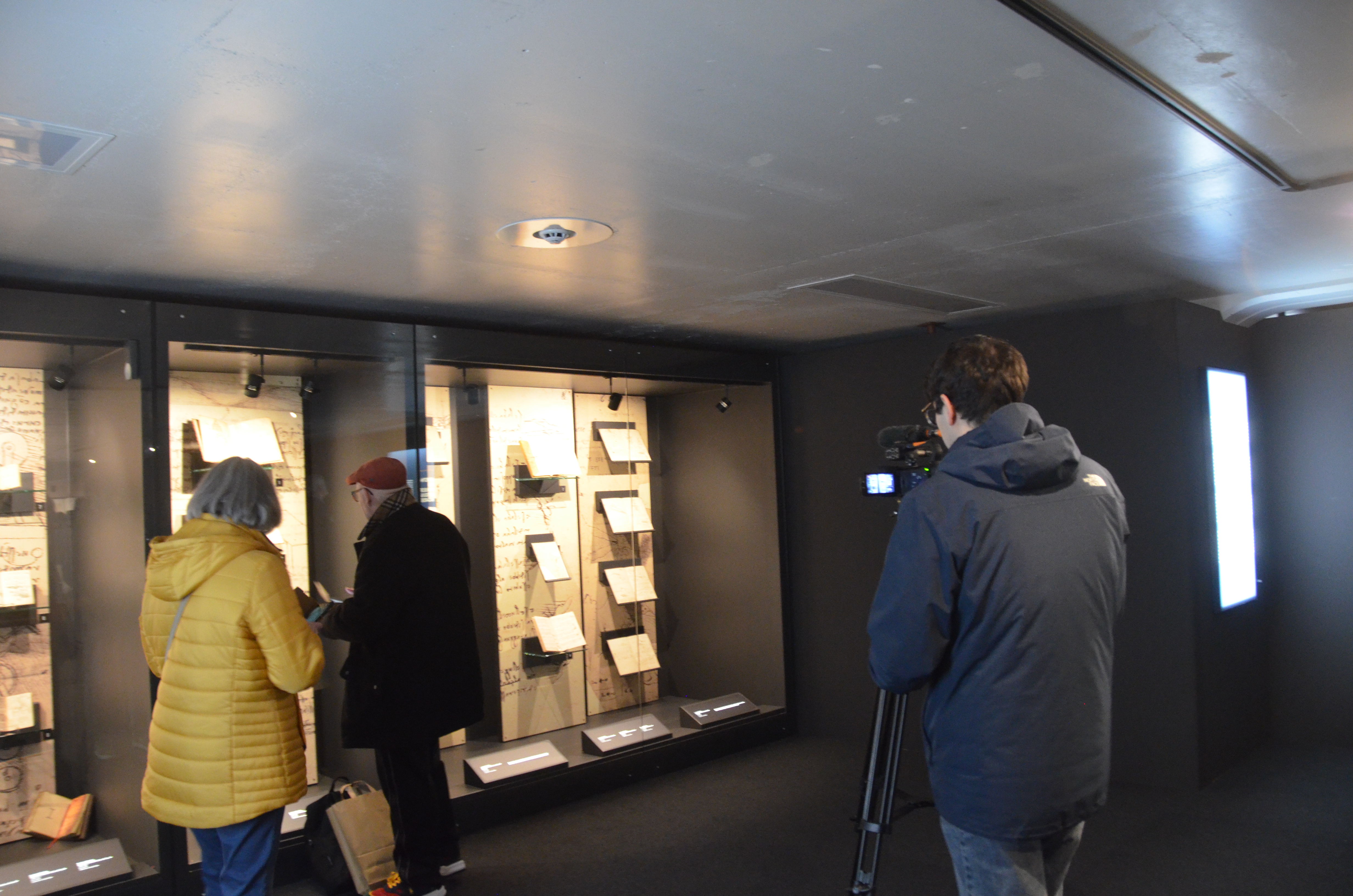“One of Leonardo da Vinci’s latest works, “Demonstration of Geometry,” unexpectedly concludes with the words “etc., because the soup is cooling.” We can imagine his servant Mathurin calling him from the kitchen at Clos Lucé in Amboise while he is engrossed in drawing. We know very little about this, but gastronomy and the study of grapevines fascinated Leonardo. Dozens of engineering drawings of machines are connected to cooking and organizing banquets. He also modeled kitchen appliances: one system for grilling meat, another for keeping food fresh, one for keeping them warm, a machine for olive pressing, and for grinding grain.
From the theme announced in the exhibition title “De Vinci – the artist, the engineer, the gastronome” at L’espace d’exposition Liége-Guillemins the first two aspects of the genius from Tuscany are well-known. However, the aspect of “gastronomy” sounds fresh to our perception, although we all love Italian cuisine. Leonardo da Vinci unfolds as an “agronomist,” “oenologist,” and an “active enthusiast of gastronomy and engineering innovations in it.”
Leonardo lived in an era of change in eating habits. The Renaissance marked not only the flourishing of art but also colossal changes in table manners, offering the elite an entirely different view of their presentation of food. Italy’s fascination, humanist reflections, the invention of printing, the discovery of America, the Protestant Reformation – all these events influenced ways of eating and food preparation, as well as the ‘good manners at the table’ of contemporaries like François I and Catherine de Medici. Utensils such as the “fork” emerged precisely in those years.
Leonardo left behind recipes and ingredients suggest that the artist may not have been a strict vegetarian, as is commonly believed.
Recipes attributed to him include:
red shrimp with burrata, apricots, and mint,
pigeon breast with blackberries
and a rarity in the 16th century, risotto.
Among the recipes is also “acquarosa” – a drink made from rose water, sugar, lemon, and alcohol, filtered through cloth.
Shopping lists have survived, incompatible with vegetarianism.
Being an architect, Leonardo seriously contemplated the construction of the kitchen. In particular, he planned a residence in Milan for Mariolo de Guevara, chamberlain of Ludovico Moro. In Leonardo’s plans, the kitchen operates on the principle of spatial separation – it is close but separate from the place where you relax and eat, ideally away from noise and smells.
The visit concludes with a three-dimensional reconstruction of the banquet table, displaying a parade of Leonardo’s favorite dishes. The genius indeed mastered the art of table setting and good manners. He established the rules of Renaissance banquets, writing them during his stay with the Sforza family in Milan. Among them are classics such as “Do not put your feet on the table,” “Do not rest your head on the plate,” and “Do not cut with a knife on the table.”
Photo by Irena Snytko
